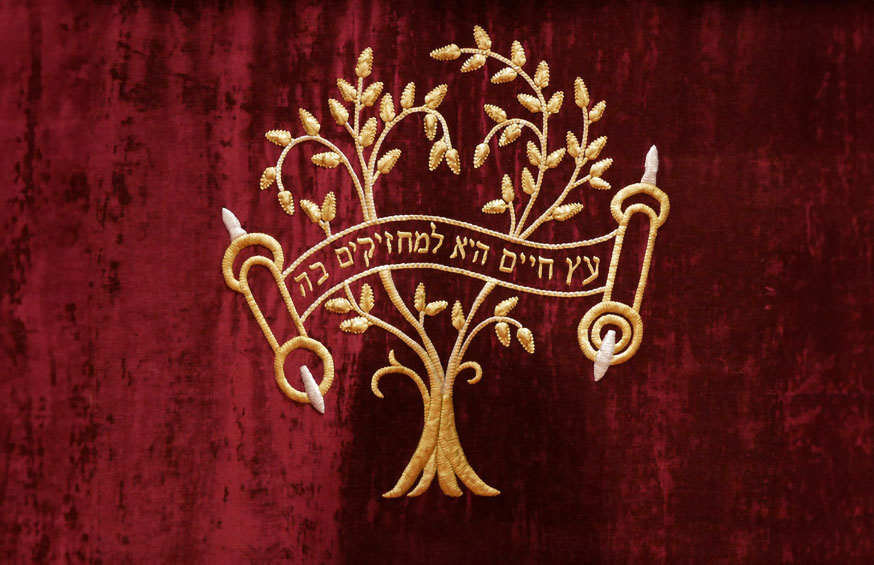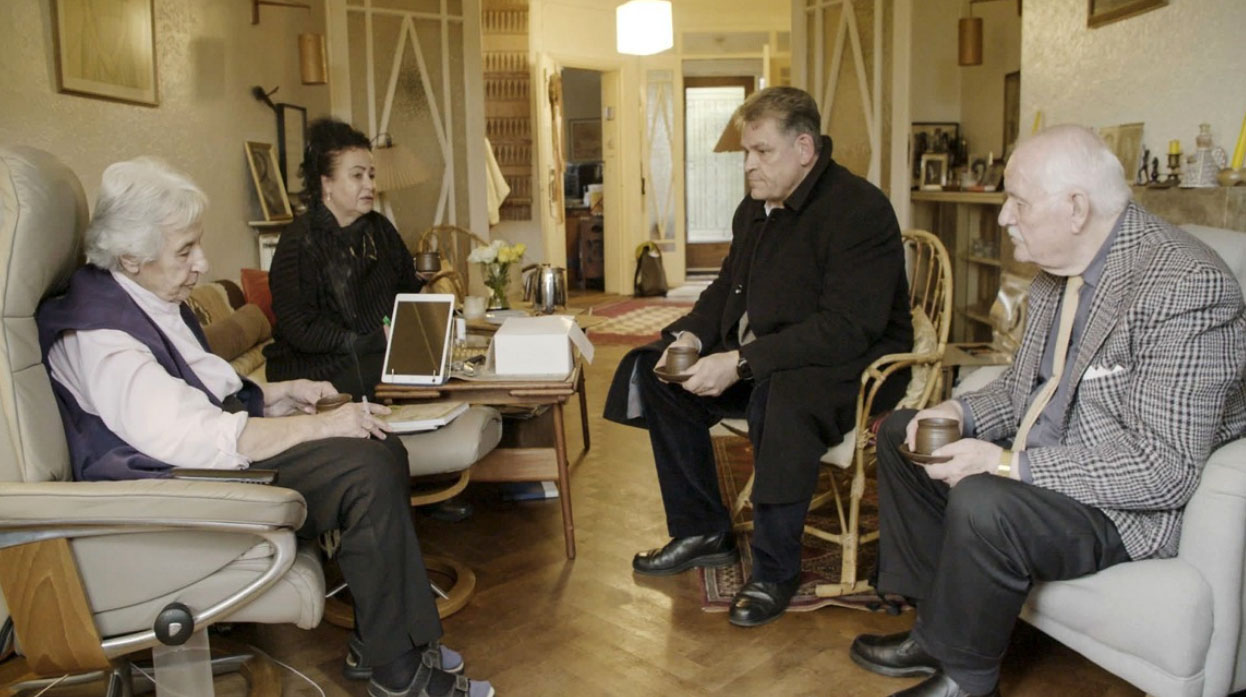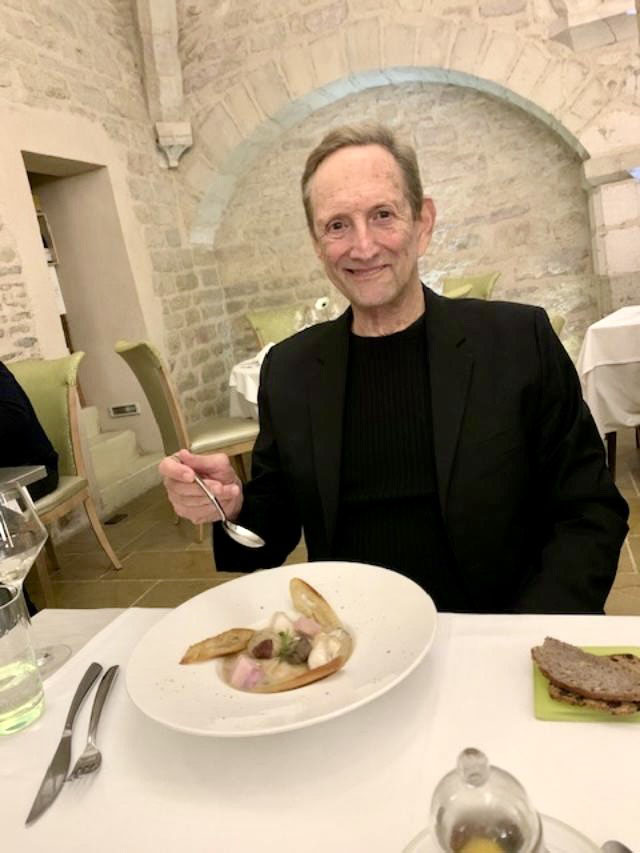For my 18th birthday, my best friend gave me a gift I treasure to this day — a paperback copy of Milton Steinberg’s “As a Driven Leaf.” I had just graduated from Yeshiva of Flatbush high school, where I received a marvelous Jewish education, but where all my questions about theology weren’t exactly welcome.
One night I crawled into bed with my new book, and suddenly a world I had studied about in Talmud class came to life before my eyes. I could picture Akiba, Rabbi Meir and his wife Beruria, and of course the book’s main character, Elisha — the one the rabbis dubbed “The Other.” Steinberg, who was also an esteemed rabbi, was inviting his readers to grapple with Elisha’s questions about faith and suffering and reason. These were my questions, too. I wasn’t alone of course. “As a Driven Leaf” has been opening eyes, minds and hearts for generations since its publication in 1939.
And now Steinberg’s immortal voice is once again calling out to us from the past. Imagine the excitement in the Jewish literary world at the discovery of a new, posthumous work by Steinberg, not a collection of essays or sermons, but another work of historical fiction, “The Prophet’s Wife” (Behrman House, $24.95), an exploration of the tragic life of the prophet Hosea. Alas, it is an unfinished work. In 1950, Steinberg died tragically at the age of 46 leaving these 401 typewritten pages behind on his desk.
In his foreword to the book, professor Ari Goldman shares his own passionate involvement in the project of getting the incomplete manuscript into print. He says he instantly fell in love with “The Prophet’s Wife” and worked for years, without success, at penning an ending for the book. Instead, the book appears with commentaries by Rabbi Harold Kushner and the novelist Norma Rosen. What we have before us is an open-ended, incomplete work by one of the greatest rabbinic minds of the 20th century.
Needless to say, I couldn’t wait to crack open “The Prophet’s Wife.” Instantly, we are whisked back in time to the 8th century B.C.E. in the Northern Kingdom of Israel just before the period of its destruction, and we begin to get acquainted with a young boy named Hosea, his family, his home and surroundings.
Steinberg has that rare gift for putting flesh on characters long gone whose inner and outer lives are absent from the biblical text.
What do we know about the man Hosea from the biblical book of Hosea? We know nothing of his upbringing, his physical stature or inner thoughts. All we know from the text is that God commands him to marry a prostitute named Gomer. They have three children, and God picks their meaning-laden names: Jezreel (God’s promise to avenge the sins committed in Jezreel), Lo-Ruhamah (“Not Accepted”) and Lo-Ammi (“Not My People”). As would be expected, Gomer the prostitute cheats on Hosea the prophet. In his hurt he casts her out, and in his forgiveness he eventually takes her back in love. Hosea’s marriage is a metaphor for God’s relationship with Israel. His prophecies all center on this same theme: God has taken Israel as a bride; Israel is an adulterous wife engaged in idolatries; God casts her off, but in the end promises to take her back in love.
Artfully, Steinberg takes this stick figure character and turns him into a living and breathing man filled with insecurities and longings and hurts. His father ignores him, and the wife he adores betrays him with his brother Ido, the brave muscle-bound older brother he has always idolized. Hosea has no passion for revenge in his blood. He cannot hate or kill. He remains trapped inside his own weakness, imprisoned by his own passivity and helplessness. He witnesses the corruption of the priesthood, the popularity of the Baal cult in Israel, and he does nothing.
Interestingly, God never enters the novel as a character. In Steinberg’s version of the tale, Hosea marries Gomer out of love, not in obedience to some divine command. The names of his children arise as spontaneous inspiration. Steinberg invents a meeting between Hosea and the prophet Amos, who did live in the same time period. Here too, Steinberg chooses to depict the prophet as a man of insight, not of divine visions. Nothing supernatural happens, no call from above, no miracles or signs, no speaking in tongues.
Steinberg’s prophet was more like a rabbi, a person delivering a message to a community that wasn’t always ready to listen. Perhaps Steinberg, writing for a Jewish American audience just after the Holocaust, was trying to offer us a new paradigm of faith. God wasn’t going to enter history to change the course of events. That was man’s responsibility. And, all too often, man was besieged by the temptations of modern-day idolatries — assimilation, secularism, consumerism.
It is also not clear how Steinberg’s own complicated personal life colored his depiction of the marriage between Hosea and Gomer. Professor Jonathan Steinberg, Milton and Edith’s son, wrote in an article in The Jewish Quarterly Review: “The story of the tumultuous, complicated, and in many ways tragic marriage of Milton and Edith has never been properly told.”
How would the story have ended? Who knows? Was Hosea going to receive a call from above? When was he going to begin to prophesy against his people?
But there are other questions we are left asking that have nothing to do with the book’s missing ending: How would the book have been after a second or third draft? Which characters would have been more fully developed? Which would have been cut out? When was Steinberg’s wife Edith going to get her hands on the manuscript and reshape it? As we know, Edith played a major role as collaborator on “As a Driven Leaf.” And, as Goldman suggests in his foreword to “The Prophet’s Wife,” Edith, who died in 1969, may have actually played a major role in blocking the publication of this book.
There are those who may find reading an unfinished novel an unsatisfying endeavor. But for me, Steinberg’s brilliance and passion shine through every page. In the end, we have been given a mission no different from the one Steinberg set out to achieve — we must take a text full of holes and fill it out with our minds and souls.
Rabbi Naomi Levy is spiritual leader of Nashuva and author of “To Begin Again” and “Talking to God.” Her latest book, “Hope Will Find You,” will be published in September 2010.






















 More news and opinions than at a Shabbat dinner, right in your inbox.
More news and opinions than at a Shabbat dinner, right in your inbox.